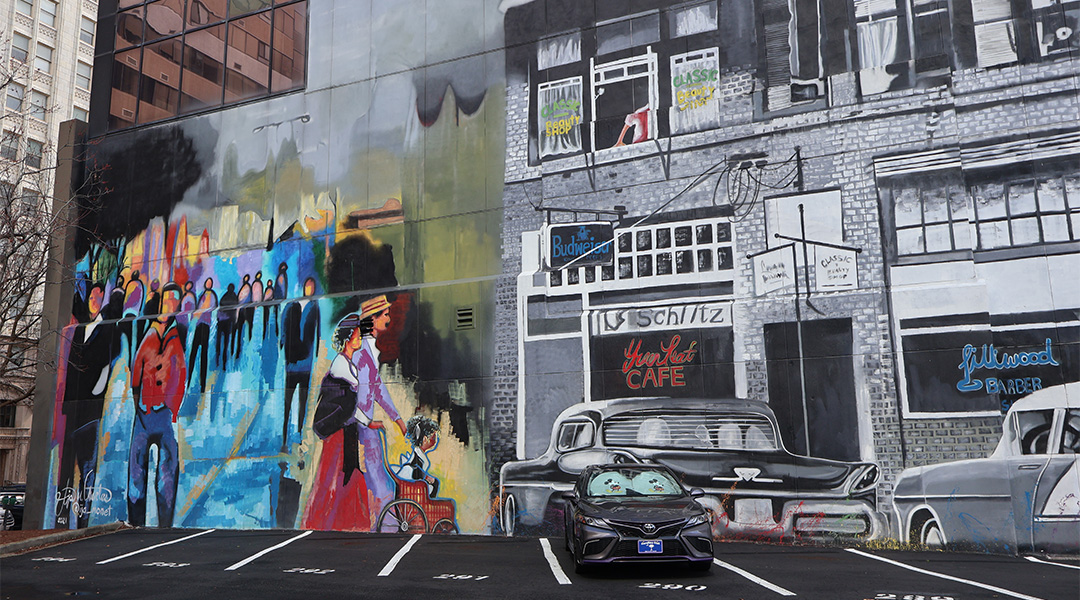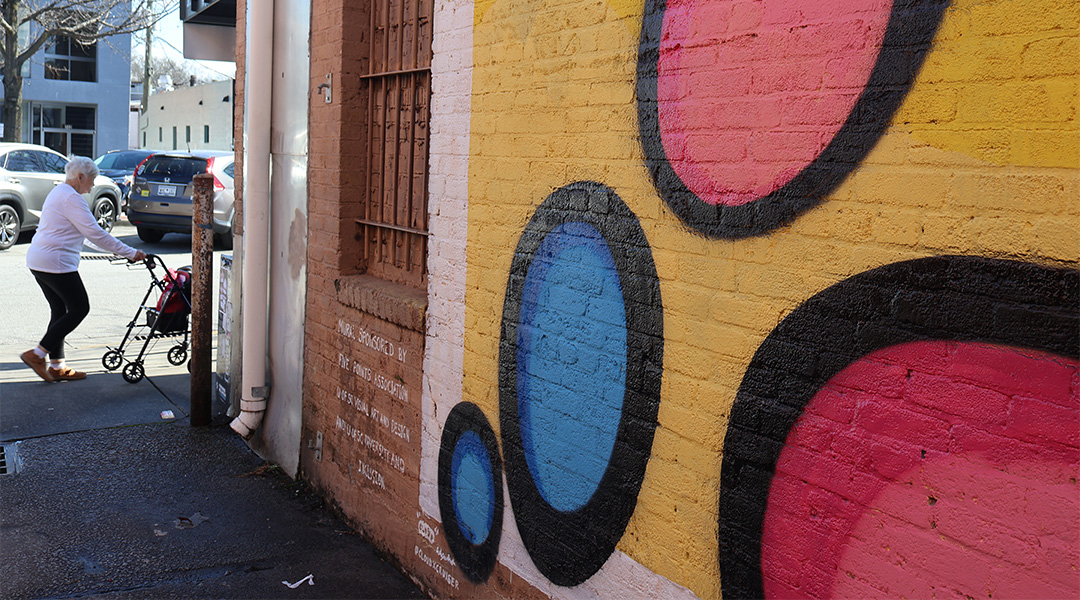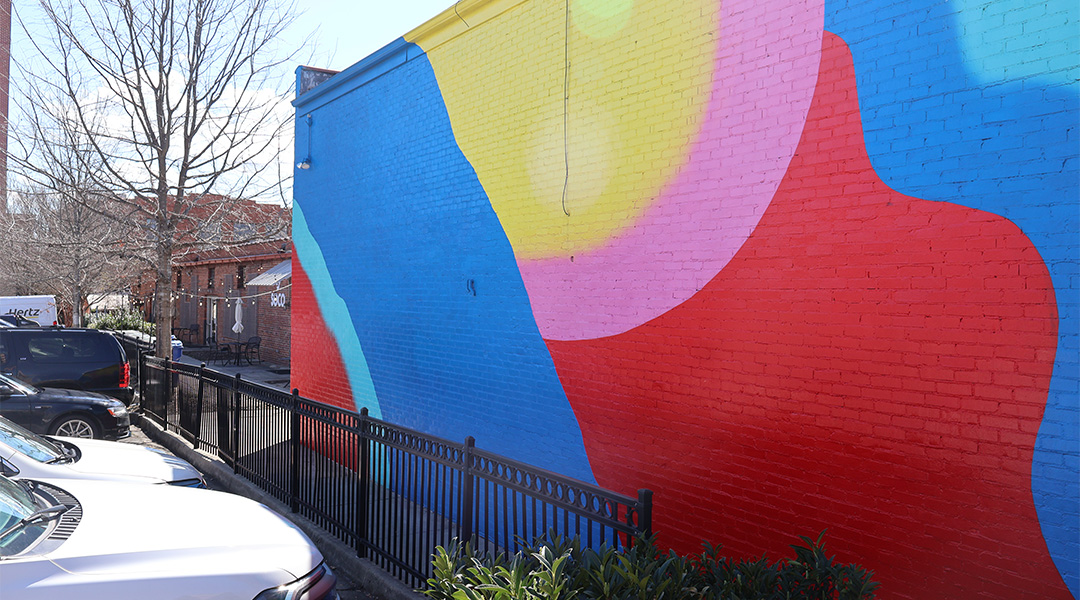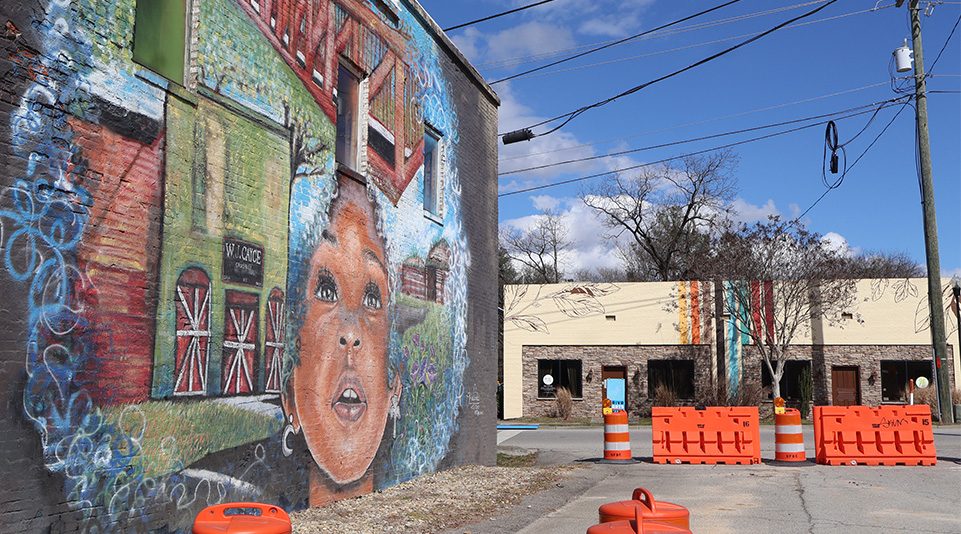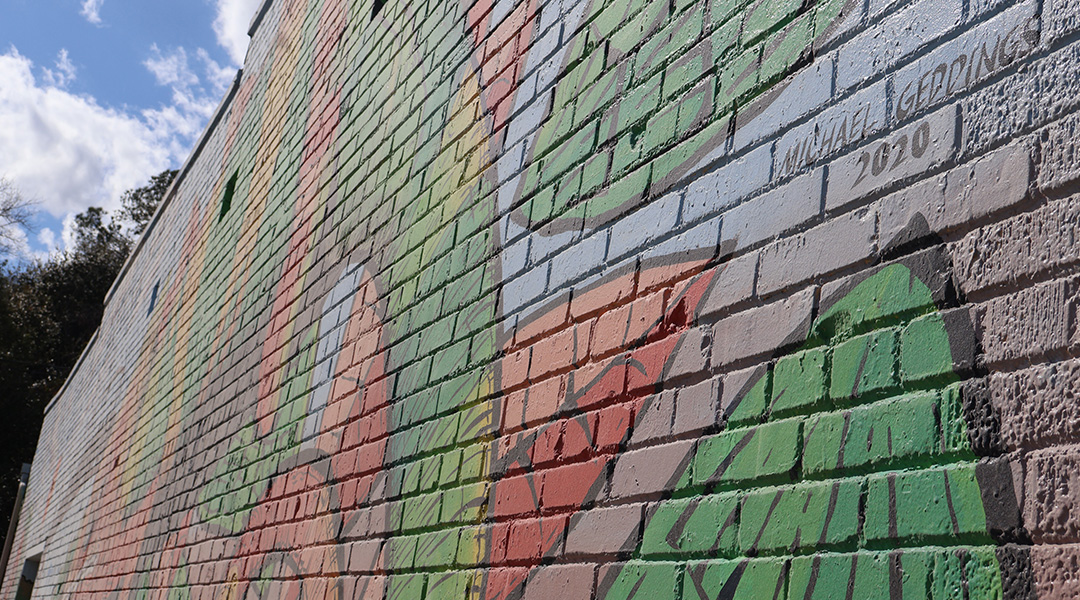Ija Charles’ mural, designed to call attention to the former Black Business District on Washington Street (Photos by Emmy Ribero/Carolina News and Reporter)
Public murals are scattered throughout Columbia’s downtown, each having a different purpose and meaning.
Some serve as historical reminders. Others are designed to bring more liveliness to an area.
The people behind the murals are passionate about their work and, whether native to Columbia or not, share a love for it and want to see art enhance the city.
‘Cloud of USC (Columbia) ‘Diversity & Inclusion’
Erbriyon “Cloud Cruiser” Barrett of Atlanta is one of the many artists whose work has reached Columbia.
His art is in the alley in Five Points, on the side of Bang Back Pinball lounge, near the main fountain.
Barrett was sponsored by USC to come and host a lecture for its art school as part of an effort to invite diverse artists to create community art around Columbia.
“Bright colors is always something I’m interested in,” Barrett said. “And so I wanted to use them into my work. Abstract, what you saw on the wall, is my abstract designs. … That’s just all free flow. So, honestly, that comes from just my mind.”
Because it is in an alley, Barrett didn’t want to put too much detail to distract people moving through it.
He said it’s fitting because the art would not be able to be seen in a straight ahead view, but more to the side.
Barrett is passionate about his work. He said he is inspired to continue because he hasn’t “reached (his) peak yet.”
“I haven’t really reached that level like I want to, so that inspires me to keep going,” he said.
Barrett says he hopes to come back and do more art for Columbia.
‘The Pursuit of Opportunity Celebrating African American Business’
Ija Charles is a Columbia native and resident and has murals all around the city.
Her favorite is a big work she has on Main Street that she calls “Black Wall Street.”
She said she was able to connect with the community while painting the mural in a way that makes it one of her favorites.
“They would show me their sketchbook while I’m on a scissor lift painting for hours and tell me about their work,” Charles said. “And I’m able to talk to them. It was a great opportunity to reach out to the youth in a way that I wish I had growing up.”
Black Wall Street is the area around Washington Street to Assembly and Gadsen streets that once was home to only Black-owned businesses. Margaret Dunlap, a local history librarian at Richland Library, said Main Street was always a booming business district, but not for black Columbia residents.
“That was the Washington Street Black business district. So that was like the Main Street for African Americans and that those two blocks were where African-American business operators had their businesses and had non-discriminatory practices,” Dunlap said. “You know, you could come in and get whatever you wanted. You got your services. You ate at the counter. You were treated like (the) 100% citizen that you were.”
Charles’ mural serves as a reminder of that history, that calls attention to something “that was no longer there, by painting it on a wall,” she said.
Other public art from Charles can be found in Cayce, West Columbia, the Rosewood area and Main Street.
‘Middle of Nowhere’
Osamu Kobayashi, a native of Columbia who now lives in Brooklyn, is the artist behind a vibrant, abstract mural found on Lady Street in the Vista.
It’s called “Middle of Nowhere” to refer to the general assumptions about Columbia. The piece uses vibrant colors and abstract design to combat that idea.
“I like the idea of kind of taking that phrase back and, you know, showing Columbia in, like, a more vibrant light,” he said. “And, you know, I guess it’s how I saw Columbia as being, you know, (it) had a certain vitality that I wanted to show.”
The abstract can be interpreted as a mountain on the left and a beach on the right, with Columbia and the sun shining in the center.
“Columbia is less defined, but is just as vibrant,” Kobayashi said.
Kobayashi grew up in Columbia and said he felt out of place. When he left for school, he realized how much he loves his home city.
“The more I come back, the more I feel like I connect with Columbia,” he said. “And I think it’s just because, you know, it’s my background and and, you know, I see it in a different light each time.”
River Art District in Cayce and the impact of public art
The Cayce River Arts District is emerging just across the bridge from Columbia.
A variety of local artists, including Charles, have pieces there. The art initiative is an attempt to revive the area in what the district’s website calls “the art of what’s possible.”
The art works serve a variety of purposes in Cayce, among them, fostering a sense of pride in their community.
“If they see a colorway that they like, or a story that they feel that resonates with them on a wall, it can make them feel part of the city in a way that the city can’t do without a conversation,” Charles said.
The art will allow for the community to help attract businesses and restaurants, increase property values and attract new residents, according to the arts district’s website.
“Adding arts into our city is vital,” Cayce Mayor Elise Partin said in talking about the development of the district. “We know that the arts is actually an economic development engine. We know that people want to see the murals or go into art galleries.”
Artists share the idea that art draws people to a space.
“I feel like everyone should have a mural somewhere not, to say, to take up space, but to just draw attraction,” Barrett said.
Erbriyon “Cloud Cruiser” Barrett’s abstract mural in the Five Points’ alleyway near Bang Back Pinball Lounge
Osamu Kobayashi’s abstract painting of Columbia on Lady Street in the Vista
Ija Charles’ contribution to the Cayce Arts District. City landmarks are featured in the girl’s hair.
A textured mural painted on bricks by Michael Geddings in the Cayce Art District

